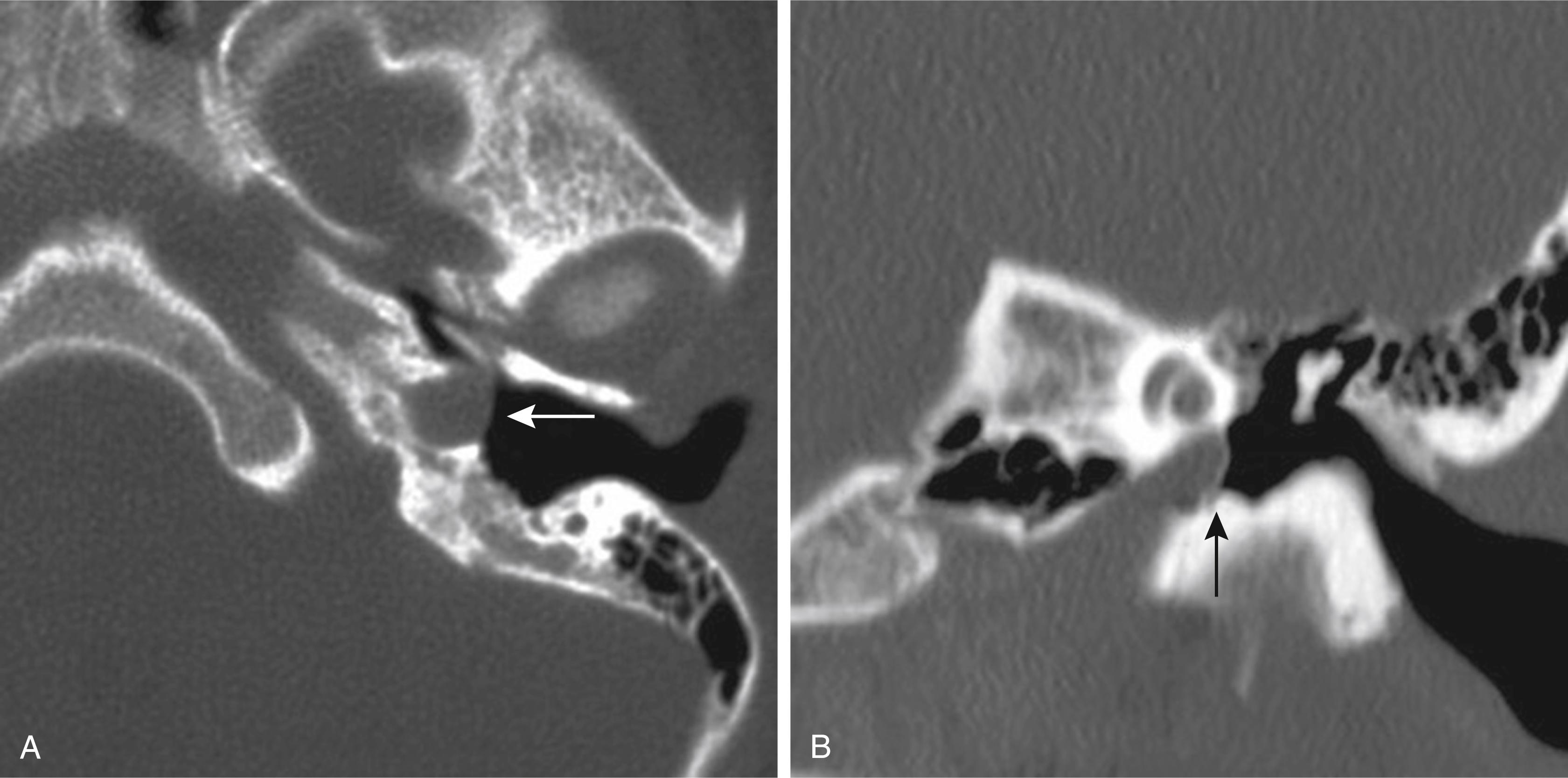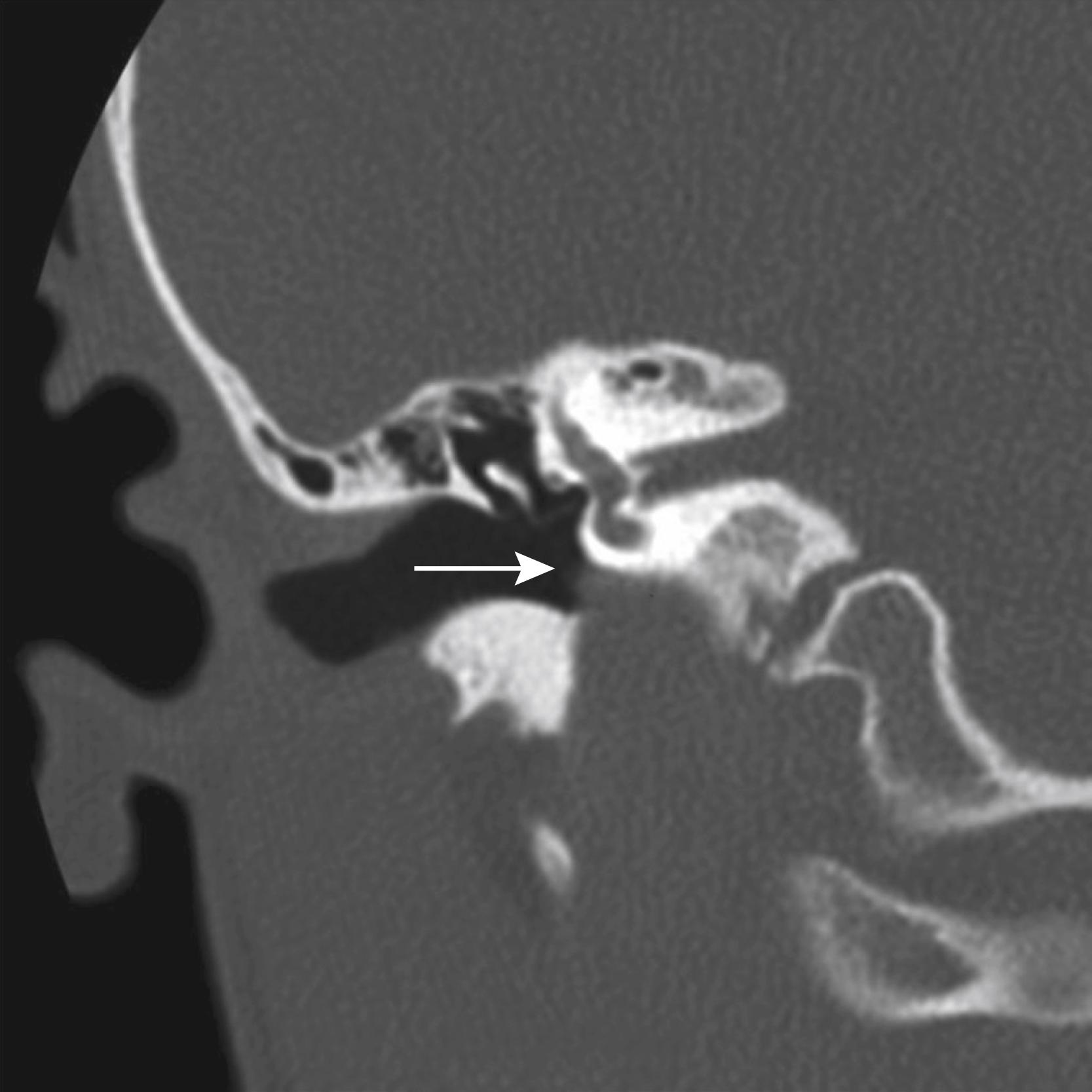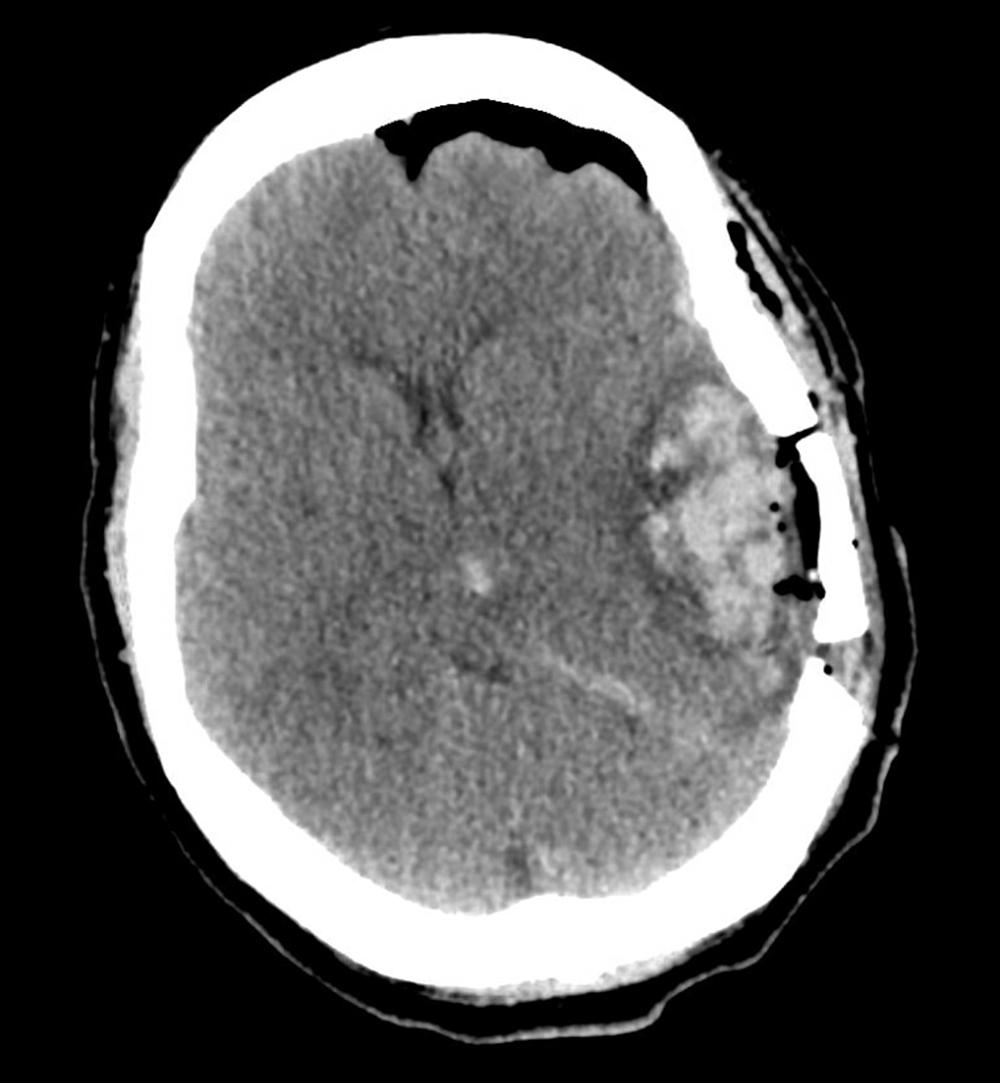Physical Address
304 North Cardinal St.
Dorchester Center, MA 02124
We acknowledge Jonathan Russin, Joshua Bakhsheshian, and Robert F. Spetzler for their authorship of the previous edition of this chapter.
![]() Please access Videos to view the corresponding videos for this chapter.
Please access Videos to view the corresponding videos for this chapter.
Surgical understanding of the vascular anatomy of the petrous temporal bone and cerebellopontine angle (CPA) is critical to optimally manage lesions in this region. Many pathological entities occur within the lateral skull base, including tumors, aneurysms, cavernous malformations, and others. This chapter will review this pathology, the relevant anatomy, and the skull base surgical approaches to the complex lesions.
The internal carotid artery (ICA) is divided into the cervical, petrous, lacerum, cavernous, and the supraclinoid segments (clinoid, ophthalmic, and communicating). Given their relationship to the temporal bone and CPA, only the petrous, lacerum, and cavernous segments will be highlighted. The petrous segment courses within the carotid canal to the foramen lacerum. The short, non-branching lacerum segment begins at this transition zone above the foramen and ends at the petrolingual ligament, a reflection of periosteum between the lingula laterally and the petrosal process of the sphenoid medially, where the artery enters the cavernous sinus. The entire course of the petrous and lacerum segments is extradural, traveling either within the bony carotid canal or being surrounded by periosteum and fibrocartilage. The distal portion of the lacerum segment, from the posterolateral aspect of the foramen lacerum to the superior border of the petrolingual ligament, is sometimes referred to as the precavernous transition zone given the distinct absence of venous channels within this short transitional segment—although the clinical significance of this transitional segment is unclear.
The petrous ICA can be divided anatomically into four segments: vertical ascending, posterior genu, horizontal, and anterior genu. As the ICA enters the carotid canal, the short vertical ascending segment turns at the level of the cochlea, corresponding to the posterior genu. The horizontal segment of the ICA then courses anteriorly and medially toward the foramen lacerum and adjacent to the petrous segment of the Eustachian tube, and again curving superiorly at the anterior genu. The petrous ICA is also immediately adjacent to nervous structures including the post-ganglionic sympathetic fibers, greater petrosal nerve, and trigeminal ganglion. Pathology within this segment can cause Horner syndrome, while excessive traction may result in postoperative facial nerve palsy.
There are four potential branches of the petrous ICA: caroticotympanic, stapedial, vidian (artery of the pterygoid canal), and periosteal arteries, although these may not always be present. Cadaveric dissections have identified the periosteal and vidian arteries as the most commonly observed, while the existence of the caroticotympanic remains controversial. , , Both the vidian and periosteal arteries arise from the horizontal segment and play an important role in interventional embolization procedures, potentially allowing the retrograde flow needed to maintain patency following proximal occlusion. , The caroticotympanic artery will enter into the middle ear to anastomose with the inferior tympanic artery, a branch of the external carotid artery. It is this anastomosis that forms the basis for an aberrant ICA. The laterally displaced ICA can be found entering the middle ear via an enlarged inferior tympanic canaliculus or through an opening in the floor of the hypotympanum ( Fig. 60.1 ). The artery will course the entirety of the middle ear from posterior to anterior, over the cochlear promontory, and reconnect to the horizontal petrous ICA along its posterolateral margin. Although typically absent, both the carotid foramen and the vertical segment of the ICA may still be present. The stapedial artery is a secondary branch of the embryonic ICA that normally regresses, although, if persistent, will pierce the middle ear, pass between the crura of the stapes, and enter the middle cranial fossa to become the middle meningeal artery.

The cavernous ICA segment traverses the cavernous sinus, extending from the petrolingual ligament to the proximal dural ring. The course of the artery can be divided into the posterior vertical, posterior bend, horizontal, anterior bend, and anterior vertical segments. The cavernous segment gives rise to a dorsal (meningohypophyseal trunk) and an inferolateral trunk (artery of the inferior cavernous sinus).
The dorsal trunk is more proximal, containing the tentorial, inferior hypophyseal, and dorsal meningeal branches. , The tentorial branch (artery of Bernasconi-Cassinari) courses lateral to the tentorium, supplying the oculomotor and trochlear nerves. This artery can be implicated in tentorial meningiomas or arteriovenous malformations. The inferior hypophyseal branch passes medially to the posterior pituitary capsule and lobe supplying the dura of the sellar floor. , This vessel can supply pituitary adenomas and sphenoid tumors. The dorsal meningeal branch passes posteriorly through the cavernous sinus supplying the abducens nerve and clival dura. , Both the inferior hypophyseal and dorsal meningeal branches will anastomose in the midline with the contralateral similar branch. ,
The inferolateral trunk will arise from the central horizontal segment of the cavernous ICA. It courses close to the abducens nerve and medial to the first trigeminal division. It supplies the dura of the inferolateral wall and the nerves of the cavernous sinus. ,
Although other branches of the cavernous segment have been described, they are much less common. If present, the McConnell capsular artery will arise distal to the inferolateral trunk supplying the anterior pituitary and sellar floor; anastomosing with the inferior hypophyseal artery or contralateral capsular artery. , , Although normally branching from the supraclinoid ICA, both the ophthalmic and superior hypophyseal arteries can branch from the cavernous portion. , Distal branches of the dorsal meningeal artery, which travels through the Dorello Canal with the abducens nerve, may represent a remnant of the fetal trigeminal artery. The presence of this may be associated with trigeminal neuralgia, cavernous-carotid fistula, or an increased risk for intracranial aneurysms.
The external carotid gives rise to numerous branches to supply structures of the head and neck. Three of the posterior branches—ascending pharyngeal, occipital, and posterior auricular arteries—extend to the petrous portion of the temporal bone.
The ascending pharyngeal supplies both the lower cranial nerves and the meninges around the jugular foramen and internal auditory canal. It also provides anastomotic channels for the anterior and posterior cerebellar circulation. , The neuromeningeal trunk of the ascending pharyngeal enters the posterior fossa via the foramen magnum dividing into two branches, the hypoglossal and jugular branches which then exit via the hypoglossal canal and jugular foramen respectively, after supplying the nearby meninges and cranial nerves. The inferior tympanic artery, which commonly arises from the proximal aspect of the neuromeningeal trunk, extends cranially to anastomose with the caroticotympanic branch of the internal carotid and the middle meningeal artery.
The occipital artery ascends obliquely between the posterior belly of the digastric muscle and internal jugular vein toward the mastoid process. A branch of the occipital will extend cranially deep to the splenius capitis, piercing the fascia between the attachments of the sternocleidomastoid and trapezius muscles at the nuchal line—an important relationship in retrosigmoid and suboccipital approaches. The auricular branch supplies blood to the posterior ear and mastoid. The mastoid branch, which commonly branches from the auricular branch, enters the skull through the mastoid foramen to supply the mastoid and temporal bone regions. The occipital artery also contains meningeal branches, which enter the posterior fossa extending through the jugular foramen.
The third posterior branch, the posterior auricular artery, arises above the posterior belly of the digastric muscle opposite the apex of the styloid process. It ascends posteriorly beneath the parotid gland and along the styloid process, providing blood supply to the posterior pinna and scalp behind the ear. The stylomastoid branch enters the stylomastoid foramen to supply the facial nerve, middle ear, mastoid air cells, and semicircular canals. The stylomastoid branch of the posterior auricular artery ultimately anastomoses with the petrosal branch of the middle meningeal artery. The loss or manipulation of either branch may cause facial palsy. ,
The middle meningeal artery, a key landmark in middle fossa surgery, is the first branch of the internal maxillary artery, one of the two terminal branches of the external carotid. The vessel supplies the meninges and calvarium of the anterior and middle cranial fossae. It courses through the foramen spinosum which lies anterolateral to both the carotid canal and geniculate ganglion. , Approximately 15 to 30 mm anterolateral from the foramen spinosum, the middle meningeal will divide into its anterior and posterior divisions to supply the respective regions of the middle and anterior cranial fossae. A small petrosal branch arises immediately adjacent to the foramen spinosum to supply the lateral edge of the trigeminal ganglion, portions of the greater superficial petrosal nerve, and the geniculate ganglion of cranial nerve VII. Bleeding in this area should be controlled with methods other than coagulation to avoid damage to the facial nerve, which may be exposed along the floor of the middle fossa. The middle meningeal artery is intimately associated with the auricular temporal nerve, which can be easily damaged during surgery. The middle meningeal artery will also give rise to the superior tympanic branch, which travels through the tympanic canaliculus with the superficial petrosal nerve to supply the tensor tympani muscle.
The cerebellar arteries provide important contributions to the petrous temporal bone and CPA. The superior cerebellar artery (SCA) is a branch of the basilar artery arising at the level of the midbrain. The SCA passes below the oculomotor nerve and bifurcates into a rostral and caudal trunk, coursing inferiorly to encircle the brainstem at the pontomesencephalic region. It passes between the trochlear and trigeminal nerves before entering the cerebellomesenphalic fissure. The SCA can come into contact with the trigeminal nerve, potentially a source of vascular compression in cases of trigeminal neuralgia.
The anterior inferior cerebellar artery (AICA) branches from the basilar artery to course across the pons toward the CPA. The AICA divides into multiple segments; however, relevant to the CPA and temporal bone are the anterior and lateral pontine branches. The anterior pontine segment courses anteriorly toward the abducens nerve, while the lateral pontine segment is found between the facial and glossopharyngeal nerves. The lateral pontine further divides into the premeatal, meatal, and postmeatal branches based on the position relative to the porus of the internal acoustic meatus. A portion of the meatal segment may loop into the IAC. Although normally this is an incidental finding, vascular loops have been associated with both pulsatile tinnitus and hemifacial spasm. , Rarely, AICA may be embedded within the dura of the bone over the subarcuate fossa.
Several nerve-related branches, including the labyrinthine, recurrent perforating, subarcuate, and cerebellosubarcuate, will branch from AICA. The labyrinthine artery, critical for hearing preservation surgery, will most commonly branch from the premeatal segment of AICA; however, anomalous origins from the basilar artery, posterior inferior cerebellar artery (PICA), or other AICA branches have been reported. The labyrinthine artery follows the vestibulocochlear nerve into the IAC to supply the bone, dura, and nerves of the IAC. The terminal branches, the vestibular, cochlear, and vestibulocochlear arteries, will supply the inner ear structures.
The vertebral artery also gives rise to the PICA, which courses posterolateral to the medulla, emerging over the cerebellar hemisphere. The PICA is divided into five segments: the anterior medullary, lateral medullary, posterior medullary, supratonsillar, and cortical branches. As the PICA traverses across the margin of the medulla, it will be found coursing between the glossopharyngeal and hypoglossal nerves.
Knowledge of the venous anatomy of the lateral skull base is critical to understanding the pathology of the petrous temporal bone and avoiding venous complications in neurotologic surgery. The mastoid is bordered by the sigmoid sinus posteromedially. The angle formed between the sigmoid posteriorly and the tegmen or dura superiorly is known as the sinodural angle, and is an important anatomical landmark in approaches to expose the mastoid contents. The inferior limit of the mastoid cavity corresponds to the superior aspect of the jugular foramen. The position of the jugular bulb is highly variable, and it may be superiorly displaced, abutting the ampulla of the posterior canal. For those presenting with noise or pressure induced vertigo, autophony, aural fullness, and/or conductive hearing loss in the setting of an enlarged jugular bulb, the posterior semicircular canal should be evaluated for any signs of bony dehiscence. , A superiorly displaced jugular bulb can limit exposure during various approaches to the lateral skull base or increase risk for bleeding or air emboli during surgery. A lateralized or enlarged jugular bulb may extend into the hypotympanum or mesotympanum. The bulb can be dehiscent within the middle ear without a bony cover ( Fig. 60.2 ), possibly bringing it into contact with the tympanic membrane. This could lead to misdiagnosis as a glomus jugulare on otoscopy, manifest as intractable bleeding during tympanostomy tube placement, or be a cause of pulsatile tinnitus in select patients. The jugular bulb drains both the sigmoid and cavernous sinuses; the latter drains via the inferior petrosal sinus through a small, medial opening. The glossopharyngeal, vagus, and spinal accessory nerves will be found coursing between the jugular bulb and the inferior petrosal sinus—a key anatomical landmark during infratemporal fossa approaches to the lateral skull base.

Mastoid emissary veins are a common occurrence; however, the origin, size, and course can be highly variable. Typically bilateral, a right-sided predominance is seen. , These accessory venous outflows originate from a variable height along the posterior wall of the sigmoid sinus—most frequently from the lower third. The mastoid emissary veins can follow a straight or tortuous course and may communicate with the diploic veins of the skull. These emissary veins should be identified preoperatively as they can be a source of significant bleeding in the surgical approach to the temporal bone and skull base.
The superior petrosal vein, commonly identified within the CPA, courses parallel to the trigeminal nerve draining into the superior petrosal sinus. Although this vein may limit access to the CPA, specifically, the trigeminal nerve root entry zone, it should be preserved whenever possible. The superior petrosal sinus is located on the petrous ridge connecting the cavernous sinus to the junction of the transverse and sigmoid sinuses. The transverse sinus originates at the confluence of the sinuses, found at the occipital protuberance and runs laterally to join the sigmoid sinus to drain the cerebellum, brainstem, and inferior temporal regions. The vein of Labbé is part of the superficial venous system draining the temporal and parietal region of the transverse sinus. Injury to this vein can occur with dural elevation and temporal lobe retraction and is the most serious complications in lateral skull base surgery, potentially resulting in aphasia and/or hemiparesis ( Fig. 60.3 ).

The Trautman triangle is formed by the space between the sigmoid and superior petrosal sinuses, the otic capsule, and the jugular bulb. This triangle serves as a safe operative corridor to the posterior fossa, commonly referred to as the retrolabyrinthine (or presigmoid) approach; however, the size of this space can be variable and may be too small to approach complex pathology. The transsigmoid modification, ligation and division of the sigmoid, can be utilized to enhance access to structures anterior to the brainstem.
Vascular anatomy has major implications for the various surgical approaches to the lateral skull base—including the relationship of the sigmoid sinus, position in relation to the otic capsule, and desire for hearing preservation. The vascular anatomy should be reviewed on preoperative imaging or explored prior to bony removal around the IAC. These vascular considerations are discussed below; however, specific details for each approach will be found in other chapters.
A modification of the classic suboccipital approach, the retrosigmoid approach allows for excellent exposure of the posterior cranial fossa and medial IAC. Although the retrosigmoid approach is commonly used in hearing preservation surgery for tumors of the CPA, it can be used for certain vascular lesions of the vertebrobasilar system and in vascular decompression of the lower cranial nerves.
It is imperative to review the vascular anatomy on preoperative imaging. Because the craniotomy is centered adjacent to the sigmoid and transverse sinuses, posterior displacement of the sigmoid sinus pushes the anterior edge of the craniotomy posteriorly, creating a deeper field of action and consequent need for more cerebellar retraction. Similarly, inferior displacement of the transverse sinus limits superior exposure of the IAC. A superior displacement of the jugular bulb can restrict access to the IAC making dissection between bulb and inferior bony trough difficult. Combining the retrosigmoid approach with an anterosigmoid, retrolabyrinthine decompression may help overcome these challenges to exposure allowing for anterior retraction of the sigmoid sinus.
Become a Clinical Tree membership for Full access and enjoy Unlimited articles
If you are a member. Log in here